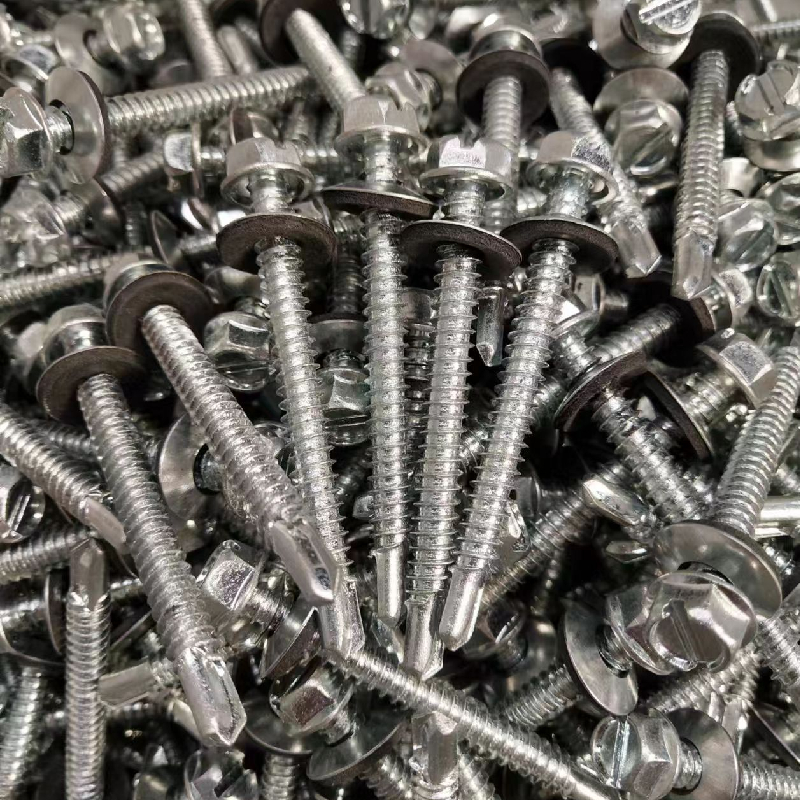Exploring the Benefits and Uses of 14% Tek Screws in Various Applications and Projects
Understanding the 14 Tek Screw A Comprehensive Overview
When it comes to fastening technologies, screws remain one of the most efficient and widely utilized methods across various industries. Among the myriad types of screws available, the 14 Tek screw, commonly referred to as the self-drilling screw, is particularly noteworthy. This article delves into the features, applications, and benefits of 14 Tek screws, providing a comprehensive overview for both professionals and enthusiasts in construction and manufacturing sectors.
What is a 14 Tek Screw?
The term 14 Tek screw refers to a specific size and type of self-drilling screw that is designed for use in metal-to-metal or metal-to-other-material applications. The designation can be broken down as follows 14 indicates the screw's gauge, which describes its diameter, while Tek signifies its unique self-drilling capability. These screws are equipped with a drill point that enables them to create their own hole as they are fastened, eliminating the need for pre-drilling, thus streamlining the fastening process.
Key Features
One of the standout features of 14 Tek screws is their efficiency. The self-drilling tip, often manufactured from high-quality carbon steel or stainless steel, ensures that these screws can penetrate various materials, including steel, aluminum, and wood composites, without the need for additional tools. This not only saves time but also reduces the overall labor costs associated with installation.
In addition to their time-saving characteristics, 14 Tek screws are designed to resist corrosion and wear, particularly those made from stainless steel or coated with galvanization. This makes them suitable for both indoor and outdoor applications, where exposure to moisture or environmental elements could lead to degradation.
Applications
14 tek screw

14 Tek screws are commonly used in a variety of applications. They are particularly favored in the construction industry for attaching roofing or siding materials, securing metal framing, and connecting structural components. Additionally, these screws play a pivotal role in manufacturing settings, where they are employed in the assembly of machinery and equipment that requires robust fastening solutions.
Moreover, their versatility extends to the installation of HVAC systems, signage, and electrical enclosures, where secure fastening is crucial. The ability to drill through different materials makes 14 Tek screws a preferred choice for electricians and contractors alike.
Advantages
The advantages of using 14 Tek screws are manifold. First and foremost, their self-drilling capability cuts down on installation time, leading to increased productivity on job sites. This ease of use makes them an excellent option for both seasoned professionals and DIY enthusiasts, as they can be driven in with a standard power drill.
Additionally, the reliability and strength of 14 Tek screws shouldn’t be underestimated. Once installed, they provide a strong hold, ensuring that structures remain stable and safe over time. The durability of these screws minimizes the risk of loosening or breaking, which can be a significant concern in high-stress applications.
Conclusion
In conclusion, the 14 Tek screw exemplifies the advancements in fastening technology that cater to contemporary construction and manufacturing needs. With its unique self-drilling capabilities, robust construction, and versatility across materials, it has carved out a niche as a go-to fastening solution in the industry. As practices evolve and projects demand more efficient and reliable methods, the relevance of 14 Tek screws is sure to endure, making them an indispensable tool in the kit of any builder or craftsman. Whether you're working on a large-scale project or a home improvement endeavor, understanding and utilizing this remarkable fastening technology can lead to lasting results.
-
Weatherproof Plastic Expansion Anchors for OutdoorNuusJun.06,2025
-
Sustainability in the Supply Chain: Eco-Friendly TEK Screws ProductionNuusJun.06,2025
-
Load-Bearing Capacity of External Insulation FixingsNuusJun.06,2025
-
Double Head Bolts: Enhancing Efficiency in Industrial MachineryNuusJun.06,2025
-
Corrosion Resistance in Chipboard Screws: Coatings for Wholesale DurabilityNuusJun.06,2025
-
Butterfly Toggle Bolts : Enhancing Structural ResilienceNuusJun.06,2025
